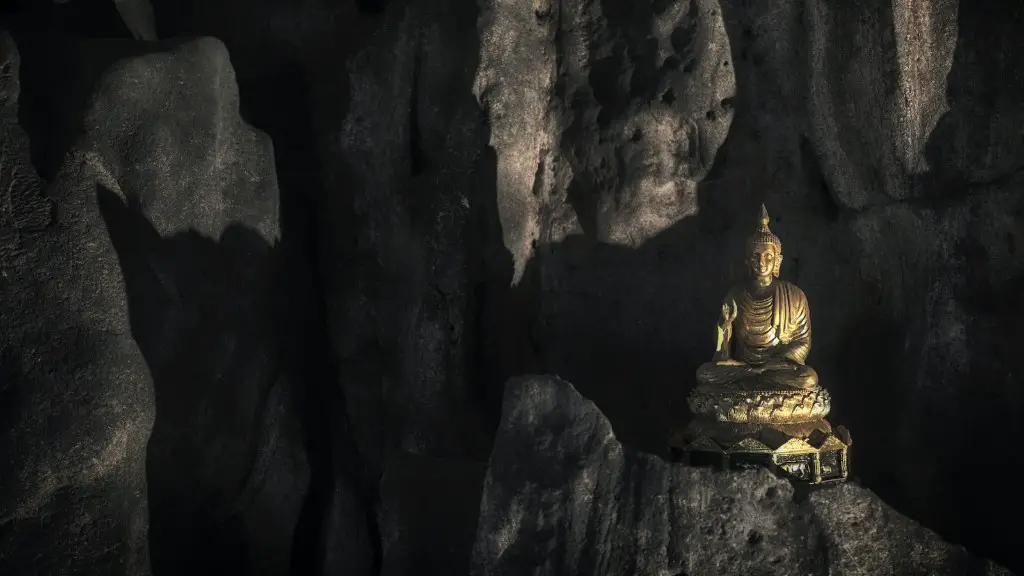Buddhism teaches that the way to escape the wheel of life is to reach nirvana. Nirvana is a state of perfect peace and bliss. It is the final goal of Buddhist practice. To reach nirvana, one must extinguish all desires and attachments. This can be difficult to do, but it is possible with the help of Buddha’s teachings.
There is no easy answer when it comes to escaping the wheel of life in Buddhism. It takes a great deal of commitment and hard work to break free from the cycle of rebirth. However, it is possible to escape the wheel of life through the practice of mindfulness and meditation. By becoming aware of the present moment, we can let go of the past and future, which frees us from the cycle of rebirth.
Who controls the wheel of life Buddhism?
The figure of Yama holding the wheel is both frightening and symbolic. He represents the impermanence of everything and the suffering that results from ignorance of the true nature of the universe. Those he holds captive are doomed to eternal suffering because they do not understand the true nature of reality.
Samsara is the cycle of birth and death that all beings undergo. Nirvana is the state of liberation from this cycle. A person attains nirvana when they have blown out the desires that keep them bound to samsara and have gained true insight into impermanence and non-self. Once a person attains nirvana, they are no longer subject to the cycle of birth and death.
What force turns the wheel of life
The Three Poisons are said to be the root of all suffering in Buddhism. They are what keep the Wheel of Life turning, according to the Buddha’s teaching of the Second Noble Truth. By recognizing and overcoming these poisons, we can end our suffering and attain enlightenment.
A human incarnation is precious because it is the only realm from which one may escape the Wheel altogether into nirvana, the Buddhist concept of enlightenment from which there are no more incarnations into the world of suffering. In other words, a human incarnation is the only opportunity to break free from the cycle of rebirth and attain true liberation. For this reason, it is essential to make the most of this life and to practice the Dharma diligently in order to achieve the highest possible level of spiritual development.
What are the three poisons on the Buddhist Wheel of Life?
The three poisons are the root cause of most of the world’s problems. Greed, hatred and delusion lead to suffering and cause people to act in ways that harm others. The Buddha taught that we can overcome these negative qualities by developing positive qualities such as compassion, wisdom and mindfulness.
The Dalai Lama is considered to be the successor in a lineage of tulkus who are believed to be incarnations of Avalokiteśvara, a bodhisattva who represents compassion. The name is a combination of the Mongolic word dalai meaning “ocean” or “big” and the Tibetan word བླ་མ་ (bla-ma) meaning “master, guru”.
Why do people seek release from samsara?
The plea is therefore to the Lord to loosen the knots that tie one to this cycle of birth. Siva alone grants the Purusharthas, dharma, artha, kama and moksha for all. He is fit to be meditated upon by all and He grants release by making them aware of their true nature.
In Hinduism, all life goes through birth, life, death, and rebirth and this is known as the cycle of samsara. This is an endless cycle that every soul goes through until they reach moksha, which is liberation from the cycle. The cycle of samsara is determined by karma, which is the consequences of a person’s actions.
What are the 6 paths of samsara
The six levels that make up the possible range of existence within saṃsāra are the realms of the gods (deva), the demi-gods (asura), humans (manuṣa), animals (tiryak), hungry ghosts (preta) and hell denizens (naraka). Each of these realms is a different level of existence, and each has its own specific characteristics.
The Wheel of Life is a tool used to help individuals identify areas of their life that may be out of balance. It is believed that by keeping all areas of life in balance, one can achieve a state of harmony and well-being.
To use the Wheel of Life, start by brainstorming the six to eight dimensions of your life that are important for you. Write these down on the Wheel of Life. Then assess each area of the life wheel, and join up the marks. Think about your ideal level for life balance, and take action to achieve it.
How do you complete the wheel of life?
The wheel of life is a helpful tool for assessing different areas of your life and for setting goals. To use the wheel, simply rate each area of your life on a scale from 1 to 10. The area that you feel is most out of balance is the area that you should focus on first.
The ‘wheel of life’ represents the endless cycle of birth, death, and rebirth that all beings undergo. This cycle is driven by the law of karma, which says that our actions have consequences that will determine our future experiences. If we act in ways that cause suffering, we will create more suffering for ourselves in the future. But if we act in ways that promote well-being, we will create more happiness for ourselves down the road. The key is to break out of the vicious cycle of karma by making positive choices that will lead to a better future.
What is the most desirable rebirth for a Buddhist
The achievement of nirvana is the ultimate goal of Buddhist teaching. However, much of traditional Buddhist practice has been centered on gaining merit and merit transfer, whereby an individual gains rebirth for oneself or one’s family members in the good realms, and avoids rebirth in the evil realms.
The popular concept of a hungry ghost in Buddhism comes from Chinese tradition. In Chinese Buddhism, a ghost is something different from a demon. A demon is an evil spirit that Buddha has already subdued, while a ghost is a wandering soul that has not yet been enlightened. Hungry ghosts are usually depicted as having small mouths and large stomachs, and they are always trying to satisfy their hunger. However, they can never eat enough, because their mouths are too small and their stomachs are too big. As a result, they are always feeling unsatisfied, angry, and frustrated. In some ways, they are like animals that are driven by instinct.
The Buddhist view of hungry ghosts is that they are caught in a cycle of craving and dissatisfaction. They are unable to break out of this cycle because they are attached to their desires. The only way to break out of the cycle is to let go of desire. This can be a difficult thing to do, but it is possible with the help of the Buddha.
What is the purpose of the Buddhist wheel of life?
The wheel of life, also known as The Bhavachakra, is a symbolic representation of the cycle of existence that Buddhists believe in. Buddhists believe in the continuous cycle of birth, life, death. They believe that you can only be liberated from this cycle of rebirth when enlightenment is reached.
The Five Precepts are the basic code of ethics in Buddhism. By following these precepts, Buddhists hope to live a moral and peaceful life. The precepts are:
1. Do not kill living things.
2. Do not take what is not given.
3. Do not engage in sexual misconduct.
4. Do not lie.
5. Do not use drugs or alcohol.
Final Words
The Wheel of Life is a symbol of the cycle of birth, death, and rebirth. It is a symbol of the way that life is constantly moving and changing. The Buddha taught that the only way to escape the cycle of birth, death, and rebirth is to achieve nirvana. Nirvana is a state of complete freedom from the cycle of birth, death, and rebirth.
There is no escape from the wheel of life, according to Buddhism. This is because Buddha taught that life is suffering and that the only way to escape suffering is to attain Nirvana. Nirvana is a state of complete peace and freedom from the cycle of birth and death. In order to attain Nirvana, one must follow the Eightfold Path, which includes right view, right intention, right speech, right action, right livelihood, right effort, right mindfulness, and right concentration.

